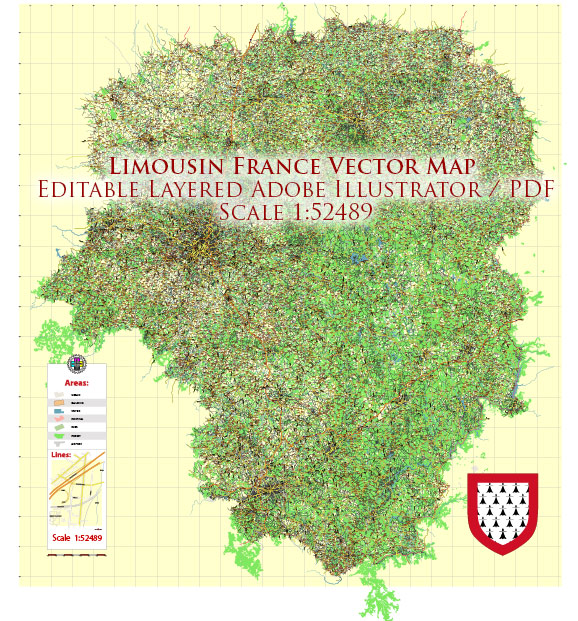Limousin is a historical region located in central France, known for its picturesque landscapes, charming villages, and rich cultural heritage. The region’s urban development has been shaped by its history, geography, and economic activities. Here is a brief overview of the history of urban development in Limousin:
- Ancient History: The history of Limousin dates back to ancient times when the area was inhabited by the Gauls, a Celtic people. The region later became part of the Roman Empire, and Roman influence is evident in some of the architectural remnants found in Limousin.
- Medieval Period: During the medieval period, Limousin experienced significant growth and development. The establishment of monasteries and the construction of churches contributed to the growth of settlements. Limoges, the capital of the region, became a prominent center for arts and crafts, particularly known for its enamelwork.
- Renaissance and Early Modern Period: In the Renaissance and early modern period, Limousin continued to thrive culturally and economically. The region’s cities and towns developed around trade routes, with Limoges remaining a key hub. The Renaissance architecture left its mark on some urban areas, with the construction of elegant buildings and townhouses.
- Industrialization: The 19th century brought about significant changes with the advent of industrialization. Limoges became renowned for its porcelain production, and the growth of this industry influenced the urban landscape. Factories and workshops emerged, leading to the development of industrial districts.
- 20th Century: Limousin, like many other regions in France, faced challenges during the two World Wars. In the aftermath of World War II, there was a period of reconstruction and modernization. Urban areas expanded, and infrastructure improved to accommodate the changing needs of society.
- Contemporary Period: In more recent times, Limousin has witnessed a shift in its economy, moving away from traditional industries. The region has focused on diversifying its economy, promoting tourism, and preserving its cultural heritage. Urban planning has increasingly emphasized sustainable development, preserving the historic charm of towns while adapting to modern needs.
- Cultural Heritage: Limousin takes pride in its cultural heritage, and efforts have been made to preserve historic buildings, medieval architecture, and traditional town layouts. This commitment to cultural conservation has contributed to the region’s appeal as a tourist destination.
Today, the urban development in Limousin reflects a balance between preserving its historical identity and adapting to contemporary challenges and opportunities. The region’s cities and towns continue to attract visitors with their blend of history, culture, and natural beauty.


 Author: Kirill Shrayber, Ph.D.
Author: Kirill Shrayber, Ph.D.